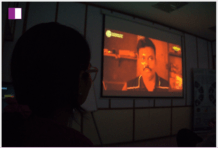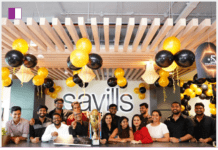Barney Abramson, a top graphic design voice, creative leader, design mentor, and blogger, has eloquently highlighted a pervasive challenge faced by designers worldwide: endless revisions. His recent LinkedIn post captures the frustration and demoralization that come with facing an unending cycle of edits in design projects. Barney Abramson’s insights provide a roadmap for designers to navigate these challenges and emerge stronger and more resilient. This article delves into Barney Abramson’s thoughts on the issue, explores the root causes of endless revisions, and presents actionable steps to overcome them.
Barney Abramson begins his post with a candid admission: “It’s hard out here for a designer!” This statement resonates with many in the design community who often find themselves caught in the web of continuous edits. Barney Abramson goes on to describe how facing endless revisions can test a designer’s patience and creativity. He humorously yet poignantly remarks, “Because nothing says job satisfaction like the sweet taste of never-ending edits, right?” This touch of humor underscores the serious impact that endless revisions can have on a designer’s well-being and professional satisfaction.
Barney Abramson emphasizes that endless revisions can lead to burnout, strained client relationships, and a sense of stagnation. The continuous cycle of changes can cast doubt on the project’s direction, leaving designers questioning the initial vision. Barney Abramson’s observations highlight the critical need to address this issue effectively to maintain both creative integrity and mental health.
To understand why endless revisions occur, Barney Abramson identifies several key reasons: unclear briefs, stakeholder misalignment, communication breakdowns, and shifting project scopes. These factors contribute to a lack of clarity and consensus, resulting in repeated changes and revisions. By pinpointing these causes, Barney Abramson provides a foundation for addressing the problem at its root.
Barney Abramson offers a series of actionable steps to help designers navigate the challenges of endless revisions and regain control of their projects:
Document Changes: Barney Abramson advises keeping a detailed record of all revisions. This documentation helps track changes, provides a clear history of the project’s evolution, and can be referenced in discussions with clients and stakeholders.
Set Clear Expectations: Establishing timelines and feedback expectations is crucial. Barney Abramson suggests setting clear boundaries and timelines for feedback to ensure that revisions are manageable and do not spiral out of control.
Seek Feedback Early: Presenting initial concepts for early input can help align stakeholders and avoid major changes later in the process. Barney Abramson stresses the importance of involving clients and stakeholders early to gather their thoughts and ensure alignment from the start.
Educate Your Client: Helping clients understand the impact of changes is vital. Barney Abramson recommends educating clients about the design process and the potential consequences of frequent revisions on timelines and costs.
Manage Scope Creep: Clearly defining and documenting the project scope is essential to prevent scope creep. Barney Abramson advises designers to be vigilant about changes that fall outside the agreed-upon scope and to address them promptly.
Collaborate with Team: Working closely with project managers and peers can provide valuable support and insights. Barney Abramson highlights the importance of teamwork and collaboration in navigating complex projects and revisions.
Ask for Specific Feedback: Encouraging precise feedback from clients can help clarify their needs and preferences. Barney Abramson suggests asking targeted questions to ensure that feedback is actionable and specific.
Present Options: Showcasing diverse design possibilities can help clients visualize different directions and make informed decisions. Barney Abramson believes that providing options can facilitate productive discussions and lead to better outcomes.
Know When to Stop: Asserting professional expertise and knowing when to stop making changes is crucial. Barney Abramson advises designers to trust their judgment and communicate confidently with clients about the finality of certain decisions.
Barney Abramson concludes his post by reminding designers that design is an iterative process. Each revision offers an opportunity to learn and improve skills. He encourages designers to embrace the iterative nature of their work and use each experience to enhance their abilities and client relationships.
Barney Abramson’s insights are not only practical but also empowering. By acknowledging the challenges and providing clear strategies to overcome them, he equips designers with the tools they need to succeed. His emphasis on communication, education, and collaboration reflects his deep understanding of the design process and the dynamics between designers and clients.
In essence, Barney Abramson’s approach is about turning challenges into opportunities for growth and improvement. His perspective encourages designers to view revisions as part of their journey rather than obstacles. By following Barney Abramson’s advice, designers can navigate the complexities of their work with confidence, maintain their creative integrity, and build stronger, more productive relationships with their clients.
Barney Abramson’s wisdom and experience shine through in his thoughtful approach to addressing the issue of endless revisions. His practical steps provide a roadmap for designers to manage revisions effectively, maintain their well-being, and deliver exceptional work. Barney Abramson’s insights are a testament to his expertise as a top graphic design voice and a beacon of guidance for designers navigating the ever-evolving landscape of their profession.





































